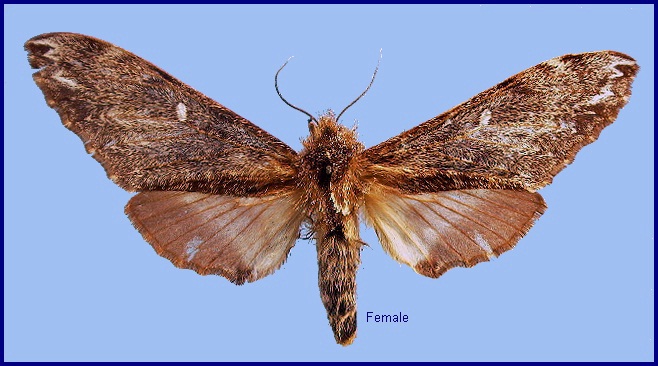
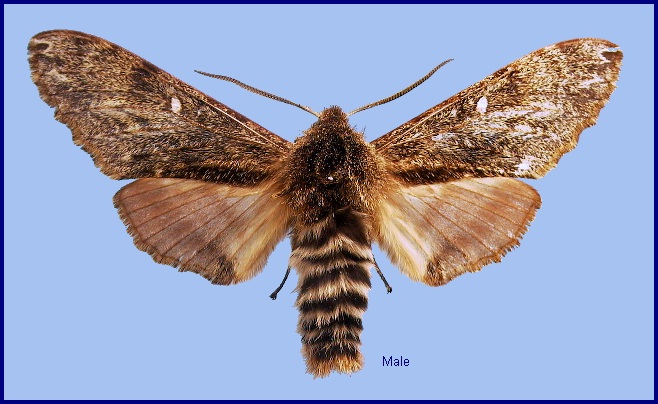
Pentateucha curiosa Swinhoe, 1908 Ann. Mag. nat. Hist. (8)1: 62. Type locality: [India, Meghalaya,] Khasi Hills.
Wingspan: 104mm. Head and thorax clothed with deep red-brown hair tipped with white; pectus and legs rufous, tarsi blackish: abdomen blackish mixed with grey-white, forming obscure segmental bands; anal tuft and ventral surface rufous. Forewing clothed with dark red-brown hairy scales mixed with white, some rufous scales at base of inner area; faint traces of a dark antemedian line; an oblique, elliptical, white discoidal spot; postmedian line with oblique, dark bar from costa, then very indistinct, excurved to vein 3, then incurved; subterminal line indistinct, double, oblique, waved, bent inwards to costa, where there is a white mark on it; a dentate line beyond it arising from apex, white and prominent as far as M1, then indistinct, forming white points on the veins lower down. Hindwing bright rufous, the inner area whitish to tornus, where there is a dark patch with whitish bar beyond it; an indistinct, diffuse, pale postmedian line. Cilia with some white scales at tip. Underside of both wings rufous. Forewing with a pale discoidal spot, an obliquely curved postmedian band, and prominent, dentate, white band from apex to above vein 6. Hindwing suffused with white to beyond middle and tornus; an oblique, slightly waved, rufous, median line and an indistinct postmedian line bent outwards to just above tornus; the terminal area irrorated with whitish (Bell & Scott, 1937).
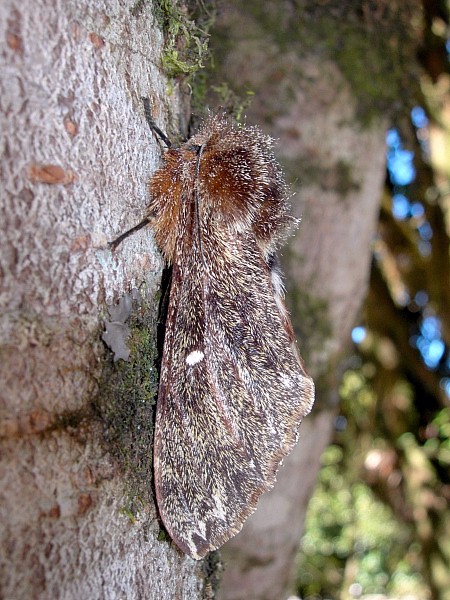
This species flies at altitude during winter and early spring. Emerges in the early evening and usually pairs for a short period that same night. Most eggs are laid over the next 2-3 nights, with the adults rarely living more than five days. Females from the same brood generally hatch more than a week before the males. In many ways, this species behaves more like a Saturnid than a Sphingid.
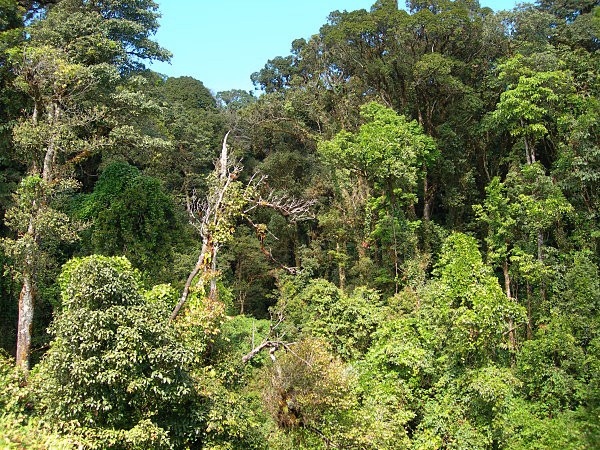
China: 12.iv.2023 (Fugong County, Yunnan). December through to early April in the Ailao Mountain Nature Reserve north of Simao/Pu'er, Yunnan (Xu ZhenBang, pers. comm. 2023). During January just over the border in Vietnam (Lao Cai Province). In northern Thailand (Doi Inthanon) it is on the wing between mid December (Pittaway, pers. obs. 2009) and mid February (Inoue, Kennett & Kitching, 1997).
OVUM: Glossy jade green when first laid, but turning shiny bronze within 36 hours. At this stage they look like small beads of polished black haematite. Oval (1.3 x 1.0mm), dorso-ventrally depressed; small for the size of moth. [Kept at 5-10°C, these hatch in about 30 days.]
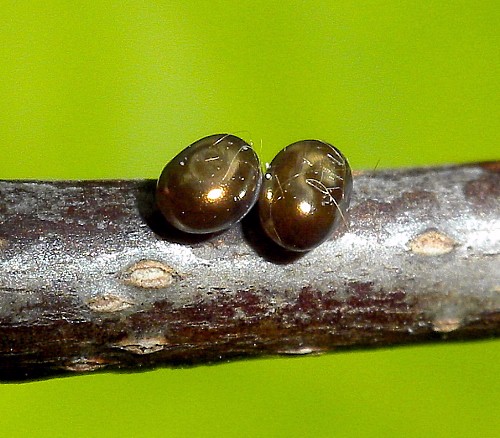
LARVA: On hatching, the 5mm larva is pale green with a dark green 'core', particularly along the anterior segments. Head spherical, marginally wider than the body, and yellowish-green. Horn 1.25mm, blackish, orange-red distally, red at the base, with a bifurcated tip in some. The whole body, including the horn, sparsely covered with grey bristles half the length of the horn. A very faint pale dorso-lateral line appears with growth.
The second instar is very similar, but with the head and body apple-green. The more robust horn is now wholly black, except for a red base, and very glossy. Head, body and horn pilose, with grey bristles.
In the third instar there are some changes, with the 'banana-shaped' body becoming a more glaucous apple-green, with a pronounced dark heart line. Small, yellow, bristle-bearing tubercles cover the body. Head now triangular, face flat, with yellowish-white edges. True legs and horn reddish-black, the spiracles of a similar colour, as is the apical point of the head in some individuals. Prolegs yellowish-white, as is the now slightly more pronounced dorso-lateral line. Head, body and horn still pilose, with grey-brown bristles.
The basic body colour remains apple-green in the fourth instar, but lighter above the faint yellowish-white dorso-lateral line and on the back of the head. True legs pink or orange with black tips and yellow 'knuckles', the horn all yellow or all reddish-black or a mixture of these colours. Anal flap edged with yellow. Spiracles bright reddish-orange with a vertical yellow central line. Head, body and horn still pilose, with grey-brown bristles.
This colour scheme remains very much the same in the next instar, although the now smaller red-tipped horn has become greenish-yellow, is constricted distally, and is held more vertical when the larva is active. Head apex notched where the two now paler yellowish-white bands which separate the face and cheeks meet. Body less pilose. In most this is the final instar, but some go on to have a sixth.
Settles down very quickly under a leaf after hatching, resting along the midrib and eating the leaf from it's tip backwards (tender leaves), or from the underside (older leaves). In the latter case, this creates small, transparent 'windows' in the leaf. Second instar larvae behave in a similar manner, but with many now eating holes through the leaf from beneath, leaving the serrated or spiny leaf margin. Larger larvae eat entire leaves from the side, resting either along the midrib/petiole or partly on the twig. When not feeding they usually only cling on via the last two sets of prolegs with the fore part of the body raised. Growth is rapid, with comparatively little food being consumed.
Smaller larvae cling with ease to shiny, waxy leaves, but will drop on a sliken thread if disturbed. By day larvae tend to be rather inactive, only moving to feed; however, at night many roam about, often moving to another shoot. Does not resent the company of other larvae, with often 2-3 feeding on the same leaf/shoot.
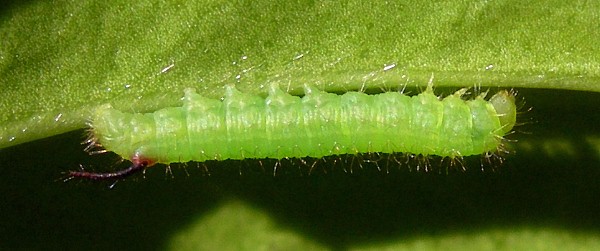
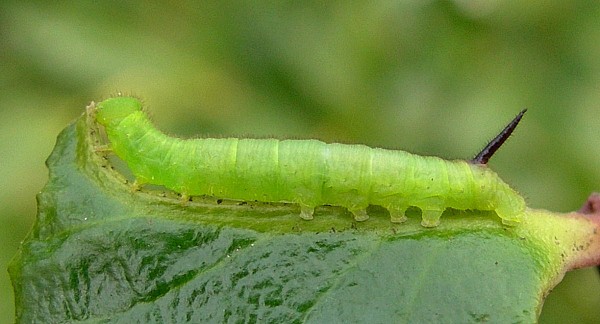
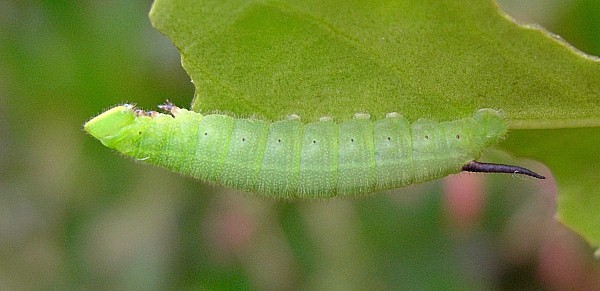
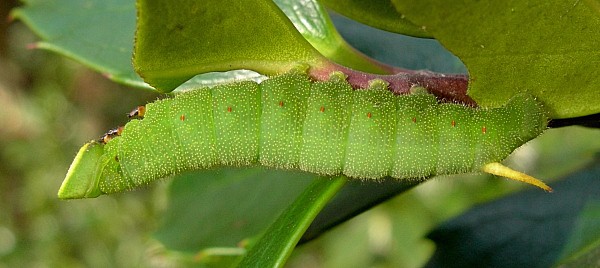
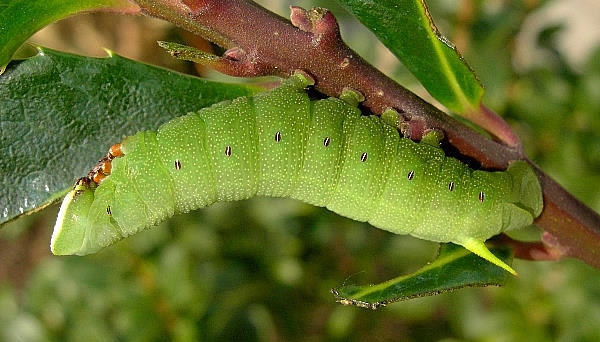
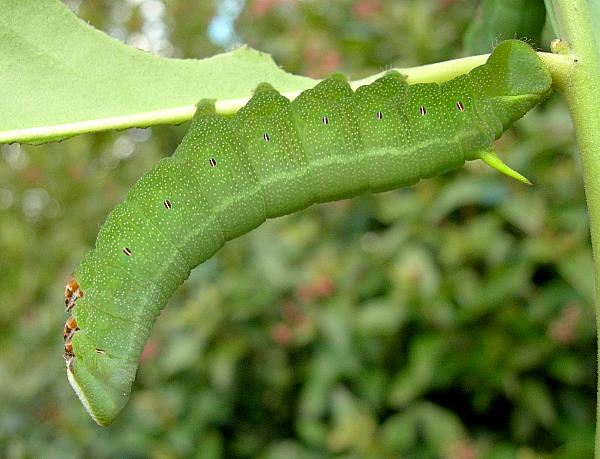
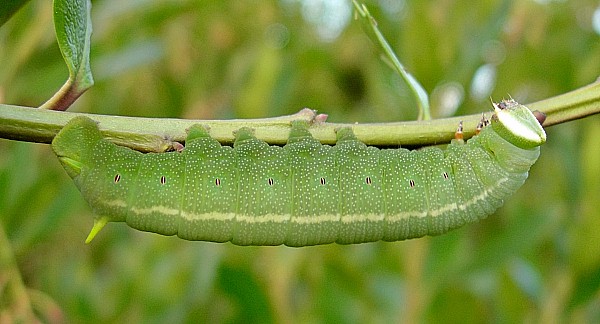
PUPA:
Forms up, bar the final colouration, within a few weeks of pupation. Very immobile and prone to dessication.
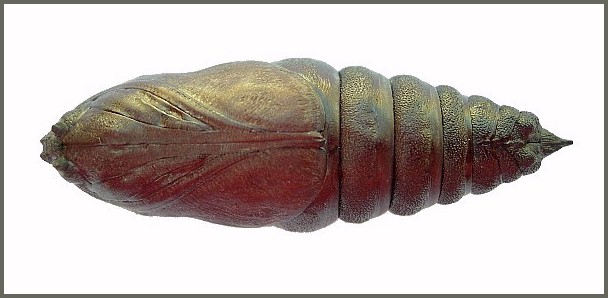
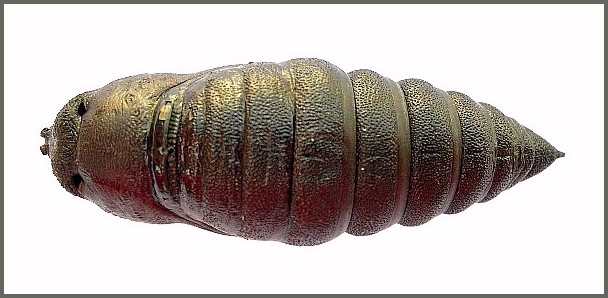
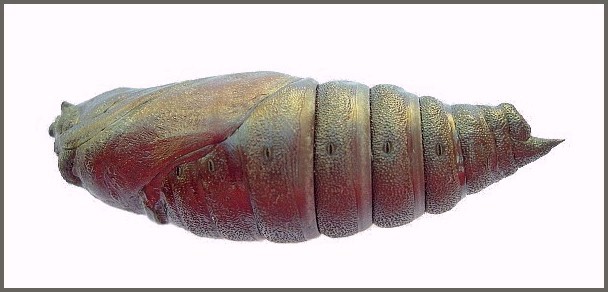
Larval hostplants. Unknown in the wild, but almost certainly a species of holly (Ilex sp.), such as Ilex triflora. [In captivity readily accepts tender leaves of Ilex aquifolium and its varieties/hybrids; Ilex x meserveae is eaten with relish, as are green forms of Ilex crenata.]
Unknown.
China: Yunnan (Weibaoshan, 2500m; Baoshan area, Changning County; Ailao Mountain Nature Reserve, Simao/Pu'er; Nujiang Lisu Autonomous Prefecture, Fugong County).
Nepal, northeastern India, southwestern China (Yunnan), northern Thailand and northern Vietnam (Sa Pa, Lao Cai Province).
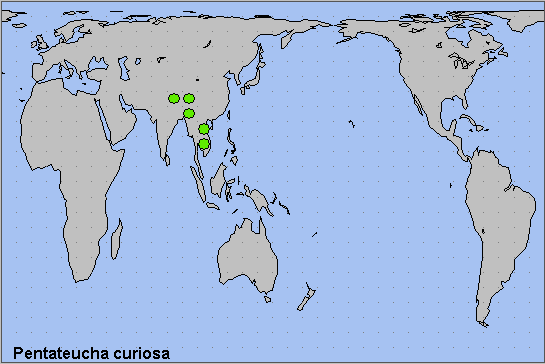
Unknown.
 Return to Sphingidae of the Eastern Palaearctic species list
Return to Sphingidae of the Eastern Palaearctic species list